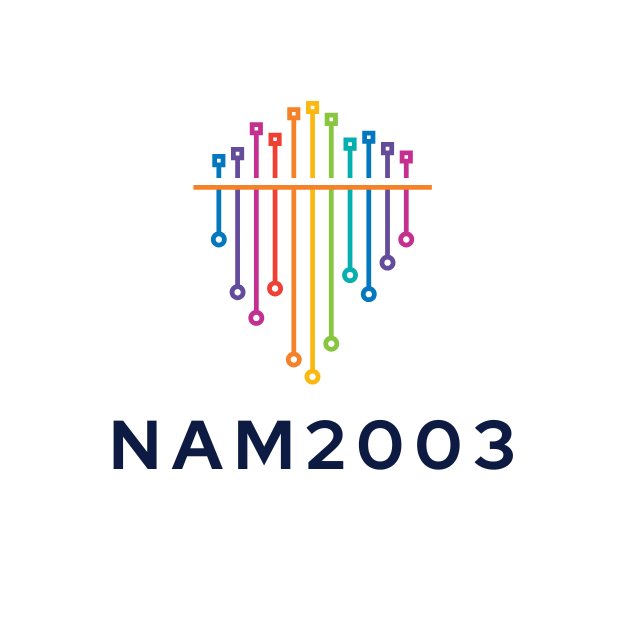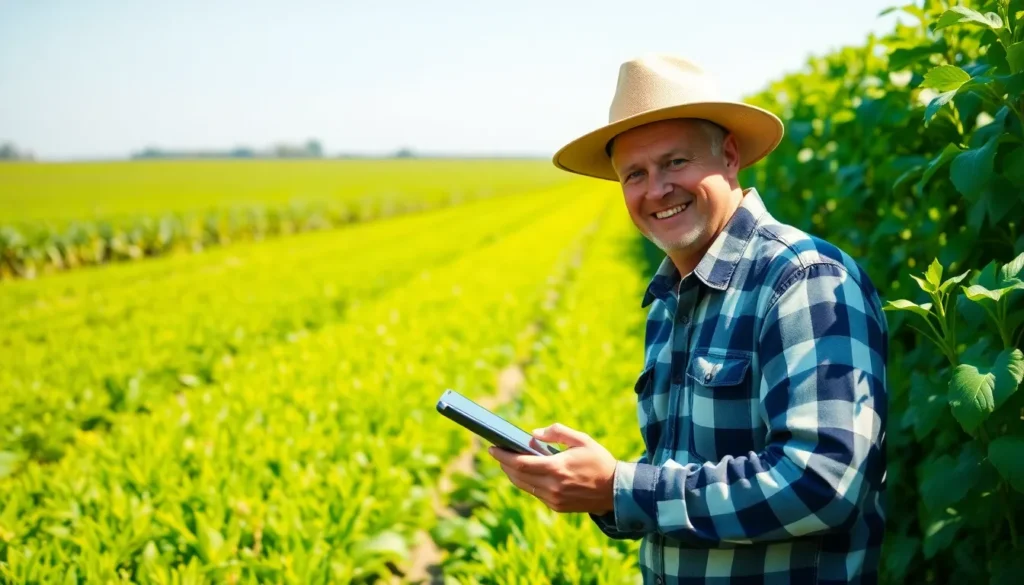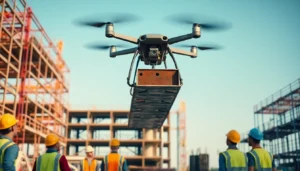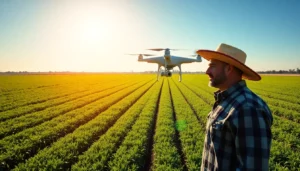Table of Contents
ToggleIn a world where farming often resembles a game of whack-a-mole with climate change, sustainable agriculture technology swoops in like a superhero with a green cape. This innovative approach not only helps farmers grow more while using fewer resources but also gives Mother Nature a much-needed high-five. Imagine crops that thrive on less water and soil that practically sings with nutrients—sounds like magic, right?
But it’s not just about saving the planet; it’s about making farming smarter and more efficient. With tech like precision agriculture and vertical farming, farmers can boost yields while keeping their eco-footprint as light as a feather. So buckle up as we dive into the exciting world of sustainable agriculture technology, where every seed planted is a step toward a greener future.
Overview of Sustainable Agriculture Technology
Sustainable agriculture technology encompasses various innovative practices aimed at optimizing farming efficiency while minimizing environmental impact. This approach incorporates precision agriculture, which utilizes GPS and data analytics to enhance crop management. By leveraging these tools, farmers can monitor soil conditions, manage irrigation systems, and apply fertilizers with pinpoint accuracy.
Vertical farming stands out in this landscape, enabling the cultivation of crops in controlled indoor environments. This method conserves water and reduces land usage, addressing the challenges posed by urbanization. Technologies like hydroponics and aeroponics further facilitate this approach, allowing for year-round production without soil dependency.
Smart irrigation systems contribute significantly to sustainable practices. These systems use sensors to evaluate soil moisture levels, delivering water precisely when and where it’s needed. Consequently, water wastage decreases, and plants receive optimal hydration for growth.
Biotechnology also plays a crucial role. Genetically modified organisms (GMOs) may enhance resistance to pests and diseases, ultimately reducing the need for chemical pesticides. Sustainable agriculture technology emphasizes developing crops that yield higher outputs with fewer inputs, aligning productivity with ecological health.
Farmers benefit from adopting renewable energy sources, such as solar and wind power, to fuel operations. Shifting to these energy options decreases reliance on fossil fuels, further reducing carbon footprints. The integration of drones in monitoring crop health and livestock management illustrates the ongoing evolution in this field.
Adopting these technologies fosters resilience against climate change impacts. Sustainable agriculture technology strives to create a balance between meeting food demands and preserving natural resources for future generations.
Key Technologies in Sustainable Agriculture
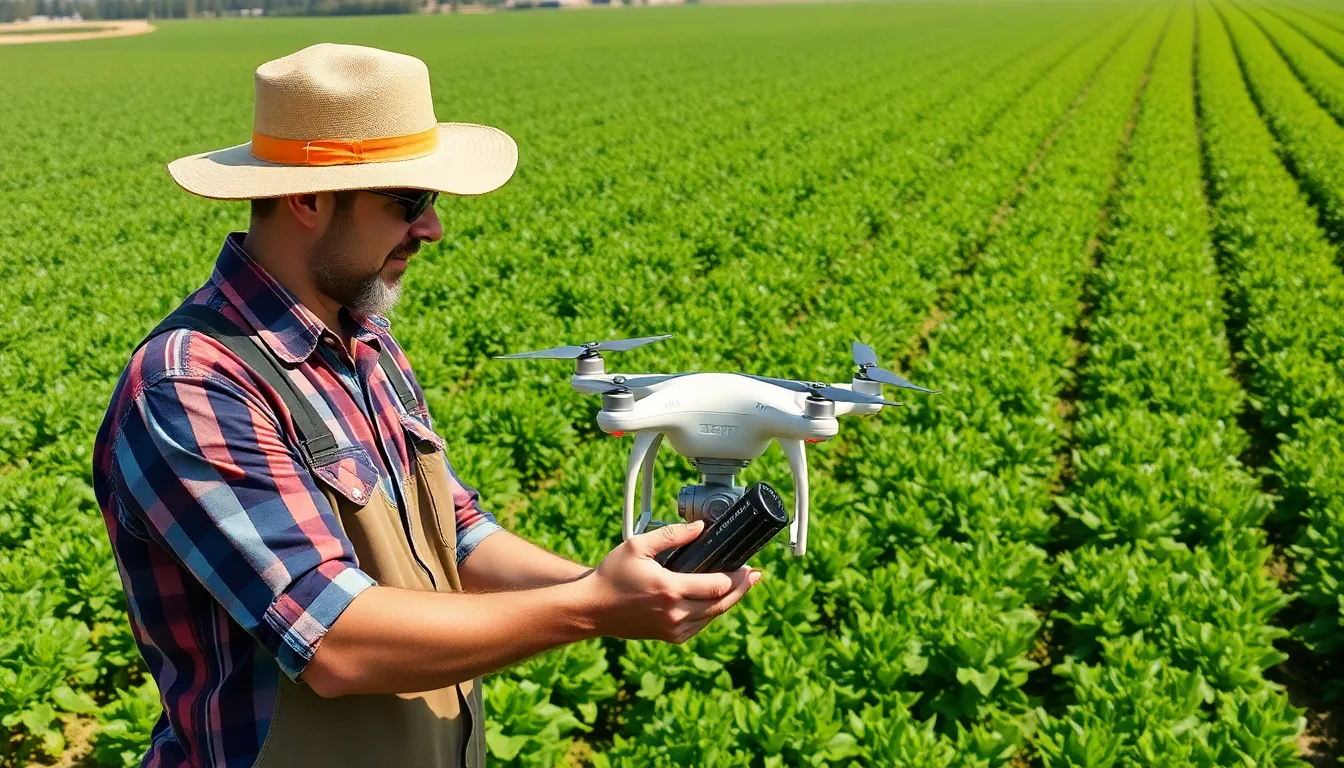
Sustainable agriculture technology embodies numerous innovative practices. These technologies support farming in achieving higher efficiency while conserving resources.
Precision Agriculture
Precision agriculture streamlines farming through the use of GPS and data analytics. This technique allows farmers to monitor crop health and optimize inputs, such as water and fertilizers. With precise data, adjustments can occur in real-time, targeting specific areas that require attention. Adoption of drones enhances this practice, providing aerial imagery to assess crop health and yield potential. Utilizing this information leads to less waste and an overall reduction in environmental impact. The application of precision agriculture results in higher yields while conserving vital resources.
Vertical Farming
Vertical farming transforms traditional cultivation by growing crops in stacked layers. This method typically occurs indoors, using controlled environments to ensure optimal growth conditions. Advantages include reduced land usage and minimized transportation emissions due to local cultivation. Technologies like LED lighting and climate control support this innovative approach, allowing year-round crop production. Sustainability increases as water consumption decreases through recycling systems. Vertical farming serves as an effective solution for urban areas, enabling food production close to consumers.
Hydroponics and Aquaponics
Hydroponics eliminates soil use by growing plants in nutrient-rich water. This technique enables faster growth cycles and significantly reduces water usage compared to conventional farming. Aquaponics builds on this concept by integrating fish farming with plant cultivation. Fish waste provides essential nutrients for the plants, creating a self-sustaining ecosystem. Both practices allow for diverse crop production in limited spaces and are ideal for urban settings. These technologies contribute to sustainable practices by minimizing resource inputs and maximizing yield outputs.
Benefits of Sustainable Agriculture Technology
Sustainable agriculture technology provides numerous benefits that advance agricultural practices. Enhanced crop productivity occurs alongside reduced resource use.
Environmental Impact
Eco-friendly practices significantly lower the ecological footprint of farming. Precision agriculture minimizes water usage and reduces fertilizer runoff, protecting local waterways. Vertical farming supports biodiversity by reducing land requirements and carbon emissions from transportation. Controlled environments enable year-round production while maximizing space efficiency. Renewable energy integration, such as solar and wind, powers operations, contributing to a cleaner energy landscape. Advanced biotechnology decreases chemical pesticide dependence, promoting healthier ecosystems.
Economic Viability
Economic advantages emerge from sustainable agriculture technology. Increased efficiency leads to reduced operating costs, making farms more profitable. Crop diversification mitigates risks, ensuring financial stability in the face of market fluctuations. Investments in technology often result in higher yields, generating more revenue per acre. Sustainable practices attract eco-conscious consumers, tapping into a growing market segment. Additionally, lower input costs result from reduced material use, providing further financial benefits for farmers. Ensuring economic sustainability fosters long-term viability in agriculture.
Challenges Facing Sustainable Agriculture Technology
Sustainable agriculture technology faces various challenges that hinder its widespread adoption and effectiveness in the agricultural sector. Significant factors contribute to these challenges.
Adoption Barriers
Adoption barriers impede the implementation of sustainable practices. High initial costs deter many farmers from investing in advanced technology. Limited access to education and training restricts farmers’ understanding of these innovative practices. Additionally, insufficient incentives from government bodies can slow the transition to sustainability. Farmers may also resist adopting new methods due to traditional practices.
Technological Limitations
Technological limitations pose significant obstacles in the field of sustainable agriculture. Current technology may not adequately address specific environmental conditions, affecting performance. Data reliability remains a concern, complicating effective decision-making. Moreover, infrastructure deficiencies in rural areas often limit access to essential technologies. Additionally, there’s a need for more comprehensive solutions that integrate various sustainable practices, ensuring a holistic approach to farming.
Future Trends in Sustainable Agriculture Technology
Emerging technologies continue to shape the landscape of sustainable agriculture, driving innovation forward. Various trends lead the way, including automation and artificial intelligence, which enhance farming efficiency by optimizing resource allocation. Wireless sensor networks gather real-time data, allowing farmers to monitor soil moisture and crop conditions with precision.
Incorporating blockchain technology fosters transparency within supply chains. This innovation enhances traceability, providing consumers with reliable information on product origins while reducing food waste. Robotics also play a crucial role, as automated systems assist in planting, harvesting, and even weeding, thus minimizing labor costs.
Integration of machine learning algorithms supports predictive analytics, enabling farmers to forecast crop yields based on historical data and environmental factors. Satellite imaging continues to improve resource management by providing detailed overviews of crop health and land use changes. Additionally, the rise of carbon farming creates opportunities for agricultural practices that sequester carbon, contributing to climate change mitigation.
Sustainable practices increasingly leverage community involvement, encouraging local partnerships that promote regenerative agriculture. Educating farmers on best practices and technology utilization becomes essential for widespread adoption. Furthermore, collaboration among stakeholders, including governments, research institutions, and the private sector, fosters innovation and shared resources, tackling barriers to adoption effectively.
Investment in infrastructure plays a significant role in expanding access to sustainable technology, particularly in underserved areas. As rural connectivity improves, farmers gain access to advanced tools and platforms that improve decision-making and productivity. Continued research efforts will enhance crop resilience and adaptability to changing climates, paving the way for a more sustainable future in agriculture.
Sustainable agriculture technology is reshaping the farming landscape by promoting efficiency and environmental stewardship. As farmers embrace innovative practices like precision agriculture and vertical farming, they’re not only boosting productivity but also reducing their ecological footprint.
The integration of advanced tools and techniques offers a promising path towards a more resilient agricultural system. While challenges remain in adoption and implementation, the potential benefits—ranging from economic gains to enhanced biodiversity—are significant.
By fostering collaboration and investing in infrastructure, stakeholders can drive the transition towards sustainable practices. This commitment to technology and sustainability will undoubtedly pave the way for a healthier planet and a more secure food future.
